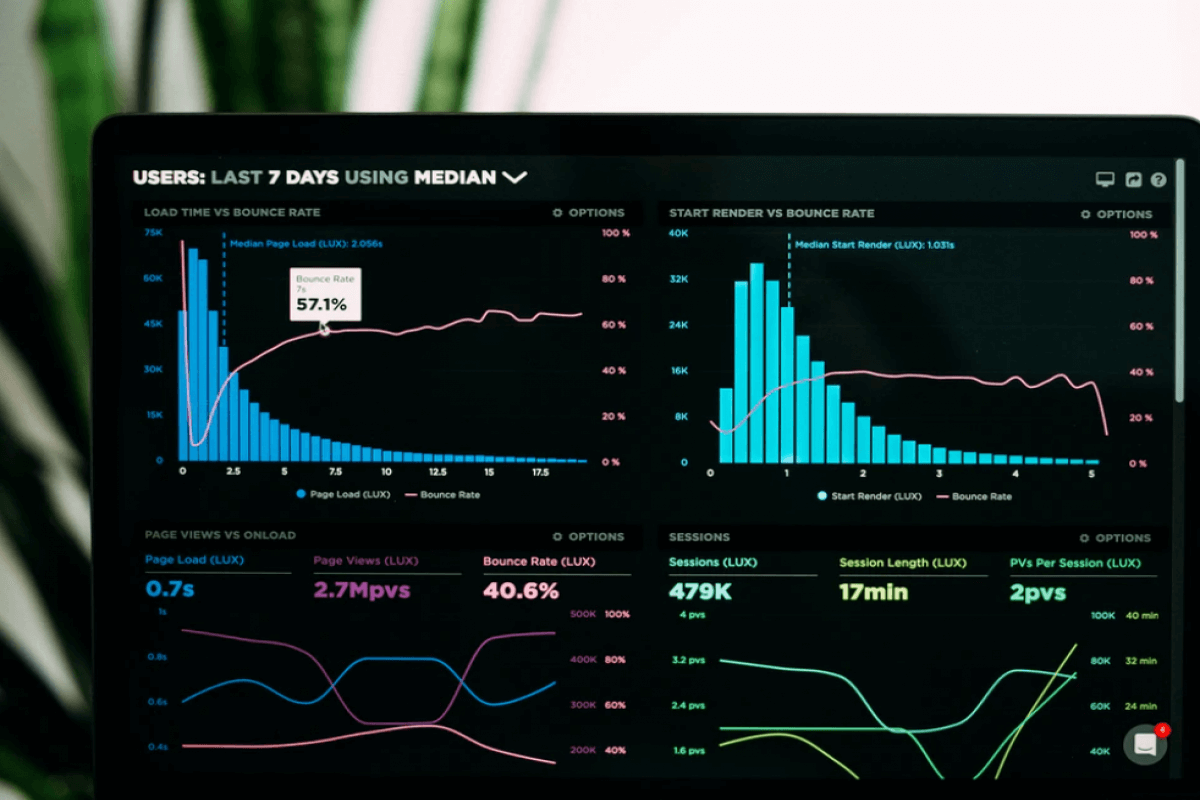Technology in accounting: A comprehensive overview of today's landscape

Accounting technology has raced beyond the general ledger module inside an ERP to encompass a multidimensional stack that spans cloud data platforms, robotic process automation (RPA), artificial intelligence (AI), permissioned blockchains, cybersecurity tooling, and specialized audit-documentation standards. These tools re-shape how your organization captures evidence, manages risk, and delivers strategic insight.
Governing bodies are seeing the need for guidelines and are rapidly adopting rules, guidelines, and standards to ensure accounting, tax, and and audit professionals follow best practices. In 2025, the Public Company Accounting Oversight Board (PCAOB) formally acknowledged that “technology-neutral” oversight is untenable and set out a program to enable tech-centric assurance, so that currently under consideration are an XBRL-style audit-documentation taxonomy and AI risk-management guidance[1]. For public and private practitioners alike, the message is clear: technology proficiency is now core professional competence, not a peripheral skill.
Summary
- Accounting technology is entwined with compliance, and ignorance of these innovations is a liability.
- Blockchain and lakehouse architectures already deliver measurable benefits and error-rate reductions.
- AI adoption requires strong governance and explainability.
- Continuous monitoring will replace static, sample-based audit approaches.
- Ethical and talent considerations are integral, and accounting technology skills must advance across the profession to fully realize productivity and assurance benefits.
Why you need to build your accounting technology skills
Regulatory deadlines are colliding
Five PCAOB standards (AS 1000 suite, Other Auditors, Confirmations, QC 1000, Tech-Assisted Analysis) have been scheduled for implementation between December 2024 and December 2026[2]. At the same time, the AICPA’s System of Quality Management (SQMS 1) and the EU AI Act impose explicit technology-governance obligations on U.S. multinationals that operate in Europe[3]. Firms that cannot demonstrate competent use and control of advanced accounting technology tools risk inspection findings, client defections, and, in the EU, heavy fines of up to €35 million or 7% of global turnover[4].
Economic ROI is quantified
There's proof that implementing accounting technology pays off. Karbon’s 2025 survey of over 500 accountants found that employees whose employers invest in formal AI training save between eight and 19 hours per week[5]. A Fortune 100 tax deployment across 45 jurisdictions cut transfer-pricing documentation cost 30% and audit adjustments 40 % within 18 months[6].
Talent expectations have changed
Christina Ho, the PCAOB board member leading the Technology Innovation Alliance (TIA), argues that standardized digital workpapers will let the regulator re-allocate its 430 inspection FTEs toward 100% AI-driven testing, making “technology literacy” mandatory for both auditors and controllers[1].
Cybersecurity is a disclosed, time-sensitive risk
The SEC’s cyber-incident rule (Item 1.05 of Form 8-K) requires disclosure within four business days and Inline XBRL tagging[7]. Audit and accounting teams are often the custodians of system-of-record data that feed those disclosures and need to understand the underlying security telemetry and its financial-statement impact.
Stakeholders demand real-time assurance
Blockchain pilots at Walmart Canada and JPMorgan’s Onyx have used accounting technology platforms to collapse reconciliation windows from 10 hours to under four hours while exposing immutable audit trails to external reviewers[8]. Boards and investors now ask why all critical processes cannot operate on similar, near-real-time rails.
Take the next step: Accelerate your accounting career with tech skills
Emerging technology in accounting
Cybersecurity tools in financial workflows
- What it is: Integrating cybersecurity tools directly into financial reporting systems and processes, creating a specialized layer of protection that monitors, detects, and prevents cyber threats impacting financial data.
- Why it's important: New SEC rules mean auditors must check reliability of electronic information end-to-end, driving demand for security alerts pushed straight into ledgers so controllers can confirm accuracy.
Blockchain and distributed ledger technology (DLT)
- What it is: A secure, shared, unchangeable record-keeping system replicated across a network. Each transaction is a block added to an unalterable chain.
- Why it's important: Over half of Fortune 500 companies use DLT. It provides auditable smart-contract evidence and reduces disputes. Formal SOX 404 documentation still lags behind.
Automation, AI, and intelligent workflows
- What it is: Applying AI and intelligent automation to perform and optimize accounting tasks, from classifying expenses to reconciling accounts.
- Why it's important: Modern AI can execute entire processes like revenue recognition. Automated workflows must keep transparent history for auditability.
Cloud lakehouse and data mesh architectures
- What it is: Lakehouses combine data-lake scalability with warehouse performance. Data meshes decentralize ownership, so teams manage their data as products.
- Why it's important: These approaches deliver up to 11 times faster processing, which is vital for real-time fraud detection and improving audit governance.
Big data fuels accounting technology
“Big data” encompasses the myriad data sources today's organizations gather and now includes sensor streams, clickstreams, social media, and unstructured documents. Three structural changes underpin this shift:
- Cheap, elastic compute — Cloud GPUs and vector databases enable overnight deep-learning on millions of invoices.
- Data lakehouse convergence — Combines governance with scale, supporting real-time dashboards while keeping storage costs low[13].
- Regulatory push toward continuous monitoring — SOX §§ 302 & 404 certifications interpreted as continuous obligations, requiring near-real-time ICFR dashboards[14].
Practical Outcomes
- Continuous Controls Monitoring (CCM): Exceptions flagged within minutes, transforming internal audit into a preventative function.
- Predictive Accruals: Machine-learning forecasts reduce P&L volatility by improving accrual accuracy.
- Anomaly Detection: Bayesian and gradient-boost models identify suspicious patterns, enhancing fraud detection.
Take the next step: Understanding emerging technology in accounting
Data analytics used in accounting
Descriptive Analytics
These analytics focus on summarizing past data to tell us "what happened." For accountants, this means leveraging interactive dashboards and reports to slice and dice key financial metrics like margin, cash conversion cycle, or expenditure by customer, SKU, or location. This provides a clear, digestible snapshot of historical performance, making it easier to identify trends, pinpoint areas of strength or weakness, and generate essential financial reports for stakeholders.
Diagnostic Analytics
Going beyond simply "what happened," diagnostic analytics aim to answer "why did it happen?" This involves using techniques like root-cause analysis, often powered by advanced graph databases, to trace variances back to their origins. For instance, an accountant can investigate why a particular expense category spiked, linking it back to specific pricing changes, supplier delays, or operational shifts. This deeper understanding is crucial for effective problem-solving and preventing recurring issues.
Predictive analytics
This type of analytics shifts focus to "what will happen?" utilizing historical data to forecast future outcomes. Accountants can employ time-series models and machine learning algorithms to predict future revenue streams, estimate bad debt, or anticipate tax cash outflows. By accurately forecasting these elements, finance departments can improve budgeting, cash flow management, risk assessment, and strategic planning, enabling proactive decision-making.
Prescriptive analytics
The most advanced form, prescriptive analytics not only predicts what will happen but also suggests "what should we do?" These optimizers recommend specific actions and quantify their potential financial impact. For accounting, this could involve recommending optimal hedge ratios to minimize currency risk, adjusting credit limits for customers based on predicted default rates, or identifying the most cost-effective investment strategies. This empowers accountants to move from analysis to action, driving optimal financial outcomes.
Best-practice analytics pipelines include data lineage mapping, explainable AI, and version-controlled model operations.
Take the next step: Big data meets accounting
AI in accounting, audit, and taxation
AI in Accounting
Artificial intelligence in accounting is rapidly transforming the profession, extending its reach across various critical functions. Advanced AI technologies, including machine learning algorithms and sophisticated natural language processing (NLP) models like Large Language Models (LLMs), are now being deployed to automate repetitive tasks, enhance data analysis, and improve decision-making accuracy. These AI applications are significantly impacting how accounting teams handle classification, summarization, and decision support, freeing up professionals to focus on strategic insights and complex problem-solving.
- Coding & Classification: LLMs auto-code expense reports to the correct cost center, reducing manual effort by 60-80 % in pilot studies[5].
- Narrative Drafting: GenAI drafts MD&A sections of 10-K filings, with controllers editing for tone and compliance.
- Capacity Gain: Practices adopting advanced AI report 71 % more time saved per day than peers[5].
- Risk Mitigation: Continuous learning models detect duplicate or fraudulent invoices in real time, supporting SOX 409 “rapid disclosure” expectations[14]
Take the next step: AI in accounting: A virtual colleague, not a competition
Governance essentials
- Bias & Fairness Testing: May 2025 research showed credit-risk scores shift materially when only gender or nationality changed[17].Similar bias can infect vendor-selection or credit-memo approvals if unchecked.
- Human-in-the-Loop Review: The AICPA/CPA.com 2025 report positions human validation as a non-negotiable layer for AI in accounting[12].
- Audit Trail: Immutable logs (hash-chained or blockchain-anchored) preserve prompts, outputs, and model versions for PCAOB inspection.
AI in audit
- Standard-Setting Acceleration: The PCAOB’s Tech Innovation Alliance calls for an audit-documentation XBRL taxonomy and AI risk-management guidance[1].
- Evidence Amendments: AS 1105 paragraph .10A (effective for fiscal years ≥15 Dec 2025) requires auditors to test the reliability of electronic information and related controls[9].
- Inspection Focus: EY forecasts a sub-10 % PCAOB deficiency rate in 2025, down from 28% in 2024, crediting front-loaded, AI-driven testing[18].
- Process Automation: Agentic AI extracts, validates, and cross-references third-party confirmations, shrinking fieldwork cycles by up to 50% in Big 4 trials
- Continuous Assurance on DLT: Smart contracts emit real-time control evidence; auditors access read-only nodes to verify completeness without requesting manual samples[8] .
Take the next step: AI in audit
AI in taxation
- Real-Time Transaction Data: E-invoicing/clearance systems such as Italy’s SDI and Hungary’s RTIR capture 100% of B2B and B2C invoices, cutting VAT gaps from >20% to <5%[19].
- Predictive Risk Scoring: Brazil’s SISAM flags mis-classified imports with 75% precision, and Armenia predicts audits at 90% accuracy[15].
- Analytics ROI: Advanced analytics cut transfer-pricing documentation cost 30% and boost tax-provision accuracy 25 % in a Fortune 100 case[6].
- OECD & ViDA Pressure: Global minimum tax (Pillar Two), BEPS Action 13, and the EU’s VAT in the Digital Age push multinational groups toward automated, API-driven compliance.
Governance requirements overlap with financial reporting: model explainability, data lineage, and human oversight are mandated in the EU and increasingly expected by the IRS and state tax authorities.
Ethical Use of Technology in Accounting
Regulatory classification of AI systems
Understand the legal landscape. The EU AI Act, for example, classifies AI systems used for credit-scoring, recruitment, and critical accounting decisions as “high-risk.” This designation isn't just a label; it imposes strict obligations, including rigorous pre-market conformity assessments, continuous post-market monitoring, and transparent documentation for regulators[4]. Accounting firms using or developing these tools must prepare for a higher compliance burden.
Bias mitigation
AI is only as unbiased as the data it's trained on. Even sophisticated models can perpetuate or even amplify existing human biases present in historical data. To counter this, firms must actively implement fairness-aware machine learning practices. This includes using fairness metrics to evaluate model outputs, ensuring training data is representative of diverse populations, and conducting regular, independent audits to detect and correct algorithmic bias[17].
Privacy & confidentiality
Protecting client data is non-negotiable. Large language models (LLMs) like GPT have demonstrated the ability to memorize and potentially regurgitate sensitive information from their training data. To safeguard confidentiality, firms should adopt a multi-layered security approach. This involves encrypting data both in transit and at rest, applying techniques like differential privacy to anonymize data sets, and enforcing strict protocols for logging and reviewing prompts to prevent data leakage.
Transparency & documentation
For AI-driven decisions to be auditable and trustworthy, they must be explainable. It's no longer sufficient for an agentic workflow to simply log the outcome (the what); it must also document the rationale, data inputs, and model parameters that led to the decision (the why). Future auditing standards, such as PCAOB AS 1105 and the forthcoming QC 1000, will likely demand this level of granular detail to ensure accountability and allow for effective review.
Talent & societal impact
Ethical technology adoption focuses on augmenting human capabilities, not just replacing them. Data from Karbon shows a strong correlation between upskilling budgets and realized productivity gains from technology, whereas layoffs often fail to produce similar benefits. Ethical stewardship means reinvesting efficiency gains back into the workforce through training, development, and creating new roles that leverage both human judgment and AI-powered insights[5].
Build your accounting technology skills with Becker's CPE
Becker offers a wide variety of CPE courses in artificial intelligence, data analytics, and so much more! Check out these popular courses:
- https://pcaobus.org/news-events/speeches/speech-detail/ai-and-the-pursuit-of-audit-quality--a-regulatory-perspective
- https://www.cpapracticeadvisor.com/2025/09/04/how-the-pcaob-can-better-promote-technology-use-in-auditing/168469/
- https://www.journalofaccountancy.com/news/2025/oct/pcaob-publishes-guidance-related-to-audit-evidence-amendments/
- https://www.jgacpa.com/pcaob-technology-innovation-alliance-working-group-report-focuses-on-emerging-audit-technologies
- https://www.cpa.com/news/cpacom-issues-2025-ai-accounting-report
- https://www.thecaq.org/audit-committee-insights-september-2025
- https://www.thecaq.org/audit-insider-september-2025
- https://assets.pcaobus.org/pcaob-dev/docs/default-source/rulemaking/docket-052/2024-007-adoptingrelease.pdf?sfvrsn=28f44e9e_2
- https://www.jgacpa.com/ga-team-perspectives-navigating-the-pcaob-inspection-process
- https://www.jgacpa.com/inspection-observations
- https://coingeek.com/60-percent-of-fortune-500-firms-pursue-blockchain-initiatives-report/
- https://www.halborn.com/blog/post/60-percent-of-fortune-500-companies-are-adopting-blockchain
- https://www.researchgate.net/publication/393713811_From_Ledger_to_Ledgerless_Evaluating_Blockchain-Driven_Real-Time_Financial_Reconciliation_in_US_Public_Companies
- https://www.deloitte.com/us/en/services/audit-assurance/blogs/accounting-finance/ai-blockchain-adoption-in-financial-services.html
- https://www.sec.gov/Archives/edgar/data/1868778/000119312525158774/d74603ddefm14c.htm
- https://www.sec.gov/Archives/edgar/data/102752/000010275225000023/vsec-20250311.htm
- https://www.sec.gov/Archives/edgar/data/1022079/000102207922000027/dgx-20211231.htm
- https://www.sec.gov/Archives/edgar/data/64463/000164117225001756/form10-k.htm
- https://www.sec.gov/Archives/edgar/data/1755953/000121390025026404/ea0235701-10k_gryphon.htm
- https://www.sec.gov/Archives/edgar/data/1930054/000119312525054797/d935128d10k.htm
- https://www.sec.gov/Archives/edgar/data/1536089/000149315224014885/form10-k.htm
- https://www.sec.gov/Archives/edgar/data/1748945/000095017023065642/hzen-20230930.htm
- https://www.ijfmr.com/papers/2025/4/49709.pdf
- https://publications.aaahq.org/cia/article/18/2/P29/12094/Preparing-Auditors-to-Evaluate-Blockchains-Used-to
- https://papers.ssrn.com/sol3/Delivery.cfm/5029553.pdf?abstractid=5029553&mirid=1
- https://www.ey.com/en_us/assurance/audit-quality-report
- https://www.researchgate.net/publication/395030924_Using_Data_Analytics_to_Optimize_Multinational_Corporate_Tax_Strategies
- https://njsr.com.ng/index.php/home/article/view/36/16
- https://tracecore.solutions/blog/how-big-data-analytics-and-business-intelligence-can-help-tax-authorities
- https://www.cpajournal.com/2024/01/31/the-future-of-business-data-analytics-and-accounting-automation/
- https://savantlabs.io/blog/ai-in-tax-compliance-and-reporting/
- https://www.tachyontech.com/data-lake-vs-lakehouse-real-performance-differences-for-big-data-teams/
- https://www.grandviewresearch.com/industry-analysis/data-lakehouse-market-report
- https://diggibyte.com/data-lakehouse-benefits-and-use-cases/
- https://www.ciat.org/Biblioteca/Estudios/2020-ICT_STL_CIAT_FMGB.pdf
- https://www.ey.com/content/dam/ey-unified-site/ey-com/en-gl/services/tax/documents/ey-2024-tpc-outlook-jurisdiction-reports-final.pdf
- https://www.pwc.ch/en/publications/2022/tax-disruption-report-2021-2022_EN_web.pdf
- https://www.wto.org/english/res_e/booksp_e/wco_wto_annex_the_case_studies.pdf
- https://taxation-customs.ec.europa.eu/system/files/2022-12/VAT%20in%20the%20Digital%20Age_Final%20Report%20Volume%201.pdf








